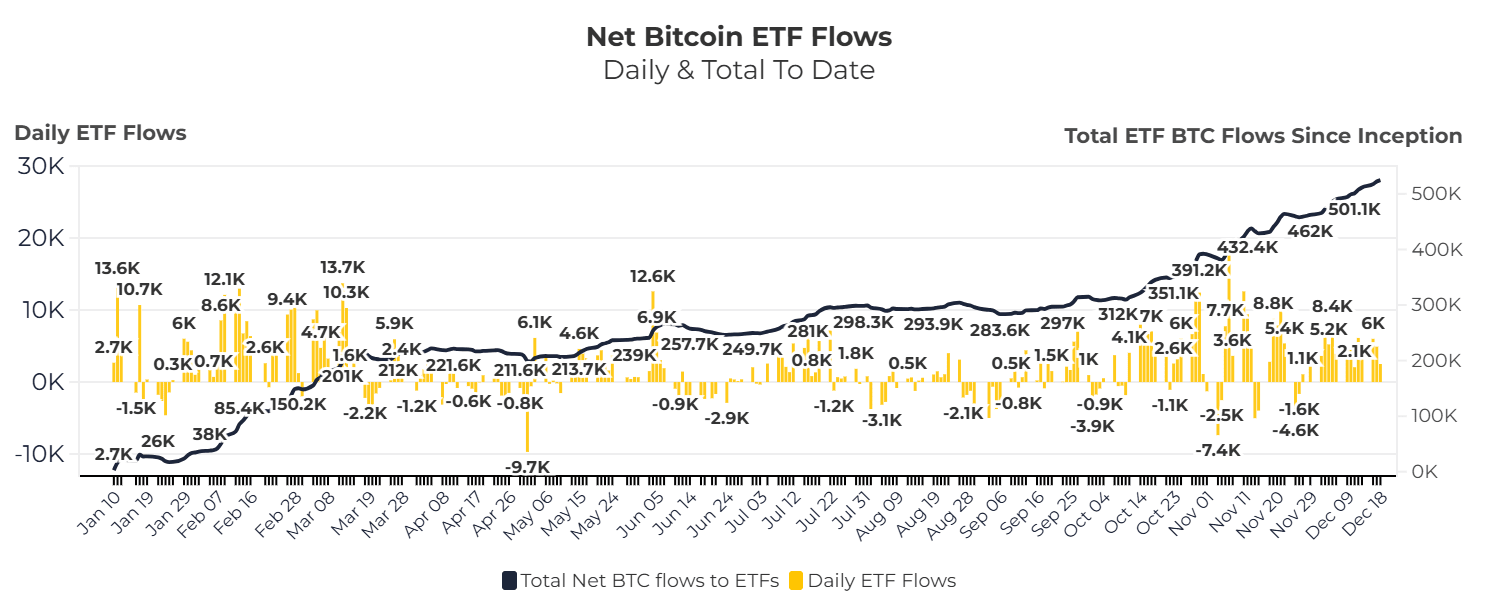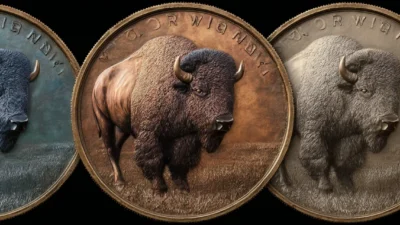TLDR
- ETF inflows track the money going into a fund.
- ETF outflows track sell-offs out of a particular fund.
- Flows don’t necessarily track ETF or underlying asset performance.
Exchange-traded funds (ETFs) have been making waves in the investment world for years, but when it comes to crypto beginners, terms like “ETF flows” can sound like financial jargon.
Don’t worry — we’ve got you. Consider this your no-nonsense guide to understanding ETF flows, why they matter, and how they could help you stay one step ahead in the market.
What Are ETF Flows?
ETF flows are essentially the movement of money in and out of ETFs. They’re like a popularity poll for investors who “vote” with their wallets by buying or selling ETF shares. The net inflows and outflows of cash into these funds can give you a snapshot of how investors feel about a certain ETF or the market as a whole.
But here’s the kicker — ETF flows don’t directly reflect an ETF’s performance or the performance of the underlying assets.
A fund can experience massive outflows without its price necessarily taking a hit or see inflows without huge price gains. Instead, flows are more about investor sentiment — a real-time pulse on how people feel about a particular market or asset.
Two Types of Flows
Inflows: Got an ETF that’s raking in cash because everyone’s buying shares? That’s called an inflow. It’s usually a sign of bullish sentiment — investors feel positive about the ETF or the market it represents.
Outflows: On the flip side, when people start dumping ETF shares and cash flows out, you’re looking at outflows. This is typically linked to bearish sentiment, signaling a lack of confidence from investors.
Why Do ETF Flows Matter?
ETF flows give you insights into how investors feel, plain and simple. For example, if you notice outflows from Blackrock’s IBIT while Bitcoin prices are underperforming, it’s a signal that sentiment could be shifting bearish.
On the other hand, persistent inflows into crypto ETFs during a market lull could indicate optimism for a rebound. Think of flows as a way to read the room before making your next move.
What Are ETF Flows Used For?
Whether you’re a trader, a long-term investor, or just trying to figure out which way the market winds are blowing, ETF flows can be incredibly informative.
Here’s how they’re used in the wild:
- Investor Sentiment: Flows give you a peek into what most investors think. Is there cautious optimism? Panic selling? The flows often tell the story.
- Trading Predictions: Are the S&P 500 ETFs seeing outflows while crypto ETFs are raking in cash? That shift in money could point to a broader trend worth exploring.
- Market Reactions: Significant inflows or outflows can sometimes predict price movements, acting as a leading indicator of what might happen next.
- Fund Operations: For fund managers, inflows mean creating more ETF shares to meet demand, while outflows could lead to reducing share availability to balance supply and demand.
Let’s say an S&P 500 ETF is seeing outflows while crypto ETFs are experiencing heavy inflows. This movement might signal a decline in confidence in traditional markets or a reaction to breaking news favoring crypto adoption.
How to Analyze ETF Flows
If you want to understand ETF flows without becoming a full-time analyst, there’s good news — you don’t have to. Tools like ETF flow calculators make it super easy to analyze flows.

Steps to Analyzing ETF Flows
- Get the Right Tool: Use an ETF fund flow calculator. Plug in the ETF ticker and select your time frame — daily, weekly, monthly, or even yearly trends are all fair game.
- Look for Trends: Check if flows are consistent, spiking, or dropping off a cliff.
- Are there month-over-month inflows?
- Is there persistent outflow during a specific period?
- Context is Key: Remember, small inflows or outflows might be insignificant for a fund managing billions. Look for the larger pattern instead of overreacting to small shifts.
- Observe Volatility: Track how fund flows align with market movements. Larger inflows during a downtrend? That may hint at optimism about a rebound.
Key Metrics to Keep in Mind
- Long-Term vs. Short-Term: Short-term fluctuations are cool but might not always reflect the bigger picture.
- Scale: What seems like a lot of money may actually be small potatoes for a massive ETF. Balance is crucial.
- Sentiment: Are investors dipping their toes in or backing up the money truck? Large inflows often tie into increased investor confidence.
Why ETF Flows Matter for Crypto Beginners
For new crypto users, ETF flows can seem obscure—but trust us, they’re not. Monitoring how money moves can offer a valuable perspective, especially in volatile markets like crypto. ETF flows give you a sense of whether the herd is running toward or away from a particular asset, which can help you make smarter decisions.
The biggest takeaway? Don’t get buried in short-term noise. Focus on long-term trends, watch sentiment, and learn what you can from historical data.
The next time you hear someone talking about ETF flows, they’re really just describing where the money’s going — and that, after all, is what the market is all about. We shared a couple of our favorite tools in this one. If you’re really into watching the crypto ETF market, we suggest bookmarking them. Good luck out there, and stay safe.












